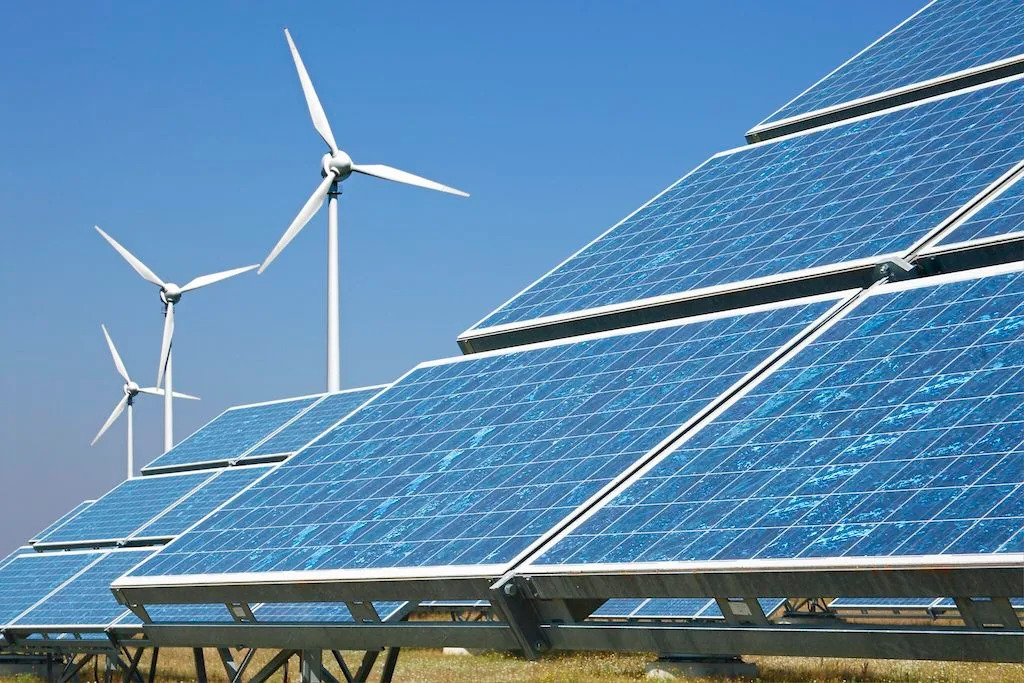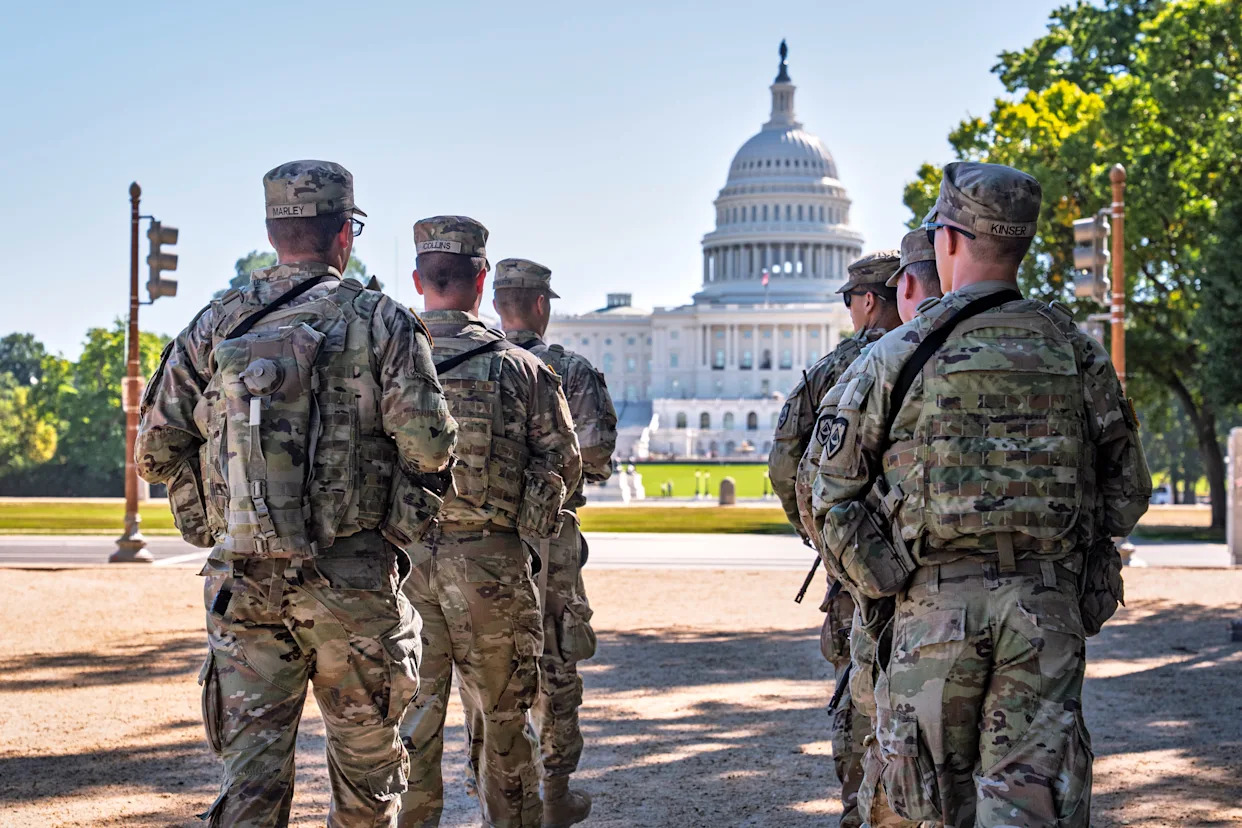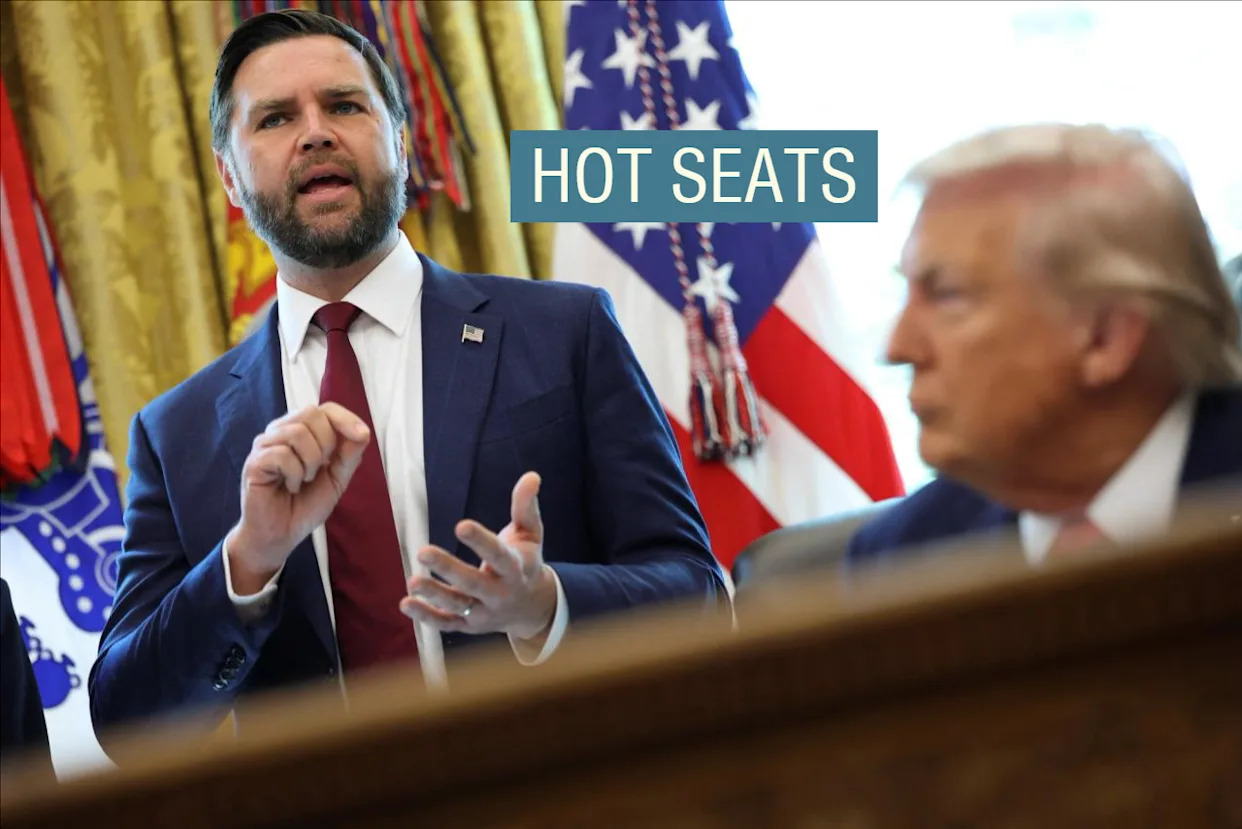
Renewable energy developers and state leaders nationwide are racing to start construction on wind and solar projects before the expiration of federal tax credits to support clean energy. (Photo by Marga Buschbell-Steeger/Getty Images)
Across the country, state leaders are racing to fast-track wind and solar projects before the expiration of federal tax credits to support clean energy.
Colorado is directing state agencies to prioritize permits for projects that might qualify for the credits. Maine regulators are moving up timelines to purchase new power, hoping to give developers a head start on construction.
And renewable industry leaders are pressing governors and lawmakers to clear bureaucratic backlogs and connect projects to the grid in the narrow window that remains.
Federal clean energy tax credits have been essential to the financing of wind and solar projects across the country, and a key part of states’ plans to transition to wind and solar power.
Following President Donald Trump’s moves to quickly phase out those credits, pending projects have a tight time frame to start construction before their eligibility expires. But states have long struggled to speed up permitting decisions, reduce regulatory hurdles and add new power to the grid. And the clock is running out.
“Every month counts,” said Patty O’Keefe, Midwest regional director at Vote Solar, a clean energy advocacy nonprofit. “[The tax credits] are the financial backbone of nearly every renewable energy project that’s currently in the pipeline.”
Over the past few weeks, some governors have directed state agencies to fast-track permits for wind and solar projects. They have also urged utilities and regulators to ensure new power can quickly connect to the grid. Some state regulators have accelerated their timelines to sign contracts for new energy, in hopes of getting more projects started before the fast-approaching construction deadline.
But it’s unclear how quickly states can clear up the bureaucratic backlogs that have frustrated them for years. And any projects that don’t meet the deadlines will face significant additional costs, likely increasing consumers’ electricity bills.
“There are billions of dollars in tax credits that are part of [state regulators’] financial analysis,” said Will Toor, executive director of the Colorado Energy Office. “If every project was unable to access those tax credits, that would be a substantial additional cost to utility ratepayers.”
Permitting
The Inflation Reduction Act, signed by President Joe Biden in 2022, extended the federal government’s clean energy tax credits into the 2030s. The policy offered developers a 30% tax credit for investments in energy projects that don’t produce carbon emissions. A separate production credit for projects in operation offered money for every unit of clean electricity they generated.
State leaders say the credits have been key to the financing of wind, solar and other renewable energy projects. States with mandates to transition to clean electricity say the federal support was integral to their plans.
For renewable energy developments, the tax credits have brought project costs down 30-50%, said Mike O’Boyle, acting policy team director with Energy Innovation, a nonpartisan climate and energy think tank.
But the landscape changed dramatically on July 4, when Trump signed a giant domestic policy measure that ended those credits. Projects must now start construction by July 4, 2026, to qualify for the credits, or be operational by the end of 2027.
“Quite a lot is at risk,” said Rachel Patterson, senior policy director with Evergreen Action, a climate-focused advocacy group.
Patterson said that wind and solar projects can take one to six years to move through state permitting programs. Unless states move urgently, projects that don’t already have permits are unlikely to advance in time to qualify for the tax credits.
Colorado leaders are trying to speed up that process. Earlier this month, Democratic Gov. Jared Polis ordered state agencies to expedite permits for projects that are eligible for the credits.
“We’re making sure that those projects move to the front of the line for permitting actions and those reviews are done quickly,” said Toor, of the Colorado Energy Office. “We’re focused on making sure that the state is not creating obstacles to projects moving forward.”
Toor said the state is hoping to advance “multiple gigawatts” of projects on an accelerated timeline before the credits expire. A gigawatt can power about 750,000 homes.
We’re making sure that those projects move to the front of the line for permitting actions and those reviews are done quickly.
– Will Toor, executive director of the Colorado Energy Office
State officials and industry leaders said it’s hard to precisely quantify the scope of projects that could benefit from state actions to accelerate deployment. Federal data shows that states plan to add nearly 200 gigawatts of wind, solar and battery storage capacity by 2028. Collectively, those projects could power roughly 145 million homes.
Some states, including California, have created a streamlined “one-stop” permitting process through a single state agency, O’Boyle said. Those states are best equipped to get more projects underway.
“When those tools are in place, there is an ability to target and streamline permitting for specific projects, especially when such large cost reductions are at stake,” he said.
Michigan passed a similar permitting law in 2023, while Pennsylvania Democratic Gov. Josh Shapiro is currently pushing for the creation of a state energy siting board.
O’Keefe, who is based in Minnesota, has called for that state and its municipalities to adopt SolarAPP+, a software platform that automates solar permitting for local governments and other jurisdictions.
Interconnection
Once clean energy developers have received approval from the state, they must wait for approval from grid operators before they can build their projects and plug into the power system. In many places, those “interconnection queues” have suffered from yearslong backlogs that have slowed the buildout of energy projects.
Now, some governors are pushing regulators and utilities to connect as many projects as possible before the tax credits expire.
In Maine, the state Public Utilities Commission kicked off an accelerated procurement process last month, seeking bids for nearly 1,600 gigawatt-hours of renewable energy. That’s equivalent to roughly 13% of the state’s electricity usage. By moving up the timeline for developers to submit proposals to build new power projects, regulators hope to give them a better chance to start construction before the deadline.
Regulators in Oregon and Minnesota are also considering proposals to fast-track electricity procurements. And Toor, the Colorado official, said regulators there will open additional procurement windows to allow more projects to be considered. The letter from Polis, the Colorado governor, also referenced the Public Utilities Commission’s authority to override permit denials from local authorities.
In California, clean energy developers have called on state regulators to create a new solicitation for projects eligible for the tax credits, allowing them to begin construction sooner. The industry groups also called on state officials to streamline environmental review and permit approvals.
O’Boyle noted that California’s transmission system has surplus capacity at existing gas-fired power plant sites. Building wind and solar projects near those plants would allow them to plug into that infrastructure and quickly come online. State lawmakers are currently considering a bill that would promote the use of such “surplus interconnection.”
New York has 26 permitted but unbuilt wind and solar projects, New York Focus reported, totaling about 3 gigawatts of energy. Developers have only started construction on two of the large projects approved by the state in the past four years.
Clean energy advocates told the outlet that projects need approvals and agreements from multiple agencies before moving forward.
“Every last whisper of detail of the project has to be finalized before they generally let you start construction,” said Marguerite Wells, executive director of the renewable energy lobbying group Alliance for Clean Energy New York.
Industry leaders said Democratic Gov. Kathy Hochul should order state regulators to coordinate with one another on permits, and direct the New York State Energy Research and Development Authority to fast-track contracts for new clean energy. Leaders at the agency did not grant a Stateline interview request.
Stateline reporter Alex Brown can be reached at [email protected].






Comments